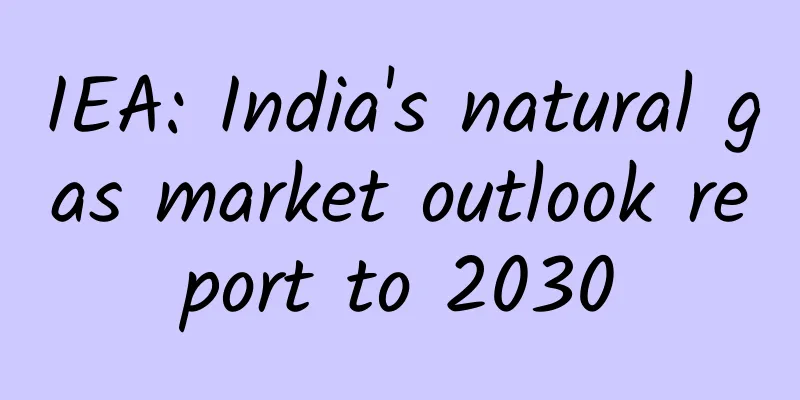IEA: India's natural gas market outlook report to 2030

|
India’s gas demand is expected to grow by nearly 60% by 2030, according to the International Energy Agency’s (IEA) latest “India Gas Market Report”, marking a major shift in the country’s energy landscape and bringing India’s gas demand on par with some of the world’s largest consumers. The report shows that India's natural gas consumption will reach 103 billion cubic meters per year in 2030. After more than a decade of slow growth and cyclical declines, India's natural gas demand increased by more than 10% in both 2023 and 2024, indicating the arrival of an inflection point. Infrastructure development plays a key role in driving market growth. Since 2019, India has nearly quadrupled the number of compressed natural gas (CNG) filling stations and more than doubled the number of residential gas connections, while expanding its gas pipeline network by 40%. By 2030, the number of CNG filling stations and residential connections is expected to double again, and the gas transmission network will expand by another 50%. The city gas distribution segment is expected to lead consumption growth in India by 2030, driven by rapid expansion of CNG infrastructure and competitive prices compared to liquid fuels. Heavy industry and manufacturing are expected to add about 15 billion cubic meters of demand during this period, while gas use in the refining sector is expected to increase by more than 4 billion cubic meters as more refineries are connected to the gas network. India’s domestic gas production, which meets 50% of demand in 2023, is expected to grow gradually to reach just under 38 bcm by 2030, up about 8% from 2023. India is working to increase the share of natural gas in its energy mix, and the report states that in an accelerated scenario, natural gas demand has the potential to grow further. Through targeted policy measures, total demand could reach about 120 billion cubic meters by 2030, equivalent to South America's current natural gas consumption. Looking ahead, the report highlights the need for strategic planning of LNG procurement and import infrastructure. As existing contracts expire, India will face a widening gap between contracted supply and projected demand after 2028, which could increase exposure to spot market volatility unless new long-term contracts are signed in the coming years.
|
>>: Is 9H really scratch-proof? Should I put a protective film on my phone?
Recommend
How to develop a marketing plan?
The most powerful marketing plan in history is he...
How to establish a complete user growth system?
The Internet has entered the second half of its e...
Cook says Apple Watch apps now exceed 3,500 and may be launched in more countries by the end of June
Beijing time, April 28, according to the technolo...
The holiday is coming to an end, but the children are still not paying attention? These 4 methods can improve children's attention
Does your doll have this situation? As soon as I ...
Accenture: Survey shows companies are reluctant to spend money on AI training for employees
Most corporate executives expect artificial intel...
Your middle ear was once a fish gill? This evolutionary process is no joke
Human middle ear It is an important organ of hear...
How did Santa Claus become a super marketing IP?
Santa Claus is itself a world-class super IP. Whe...
Taking a cold shower after exercise can be a fatal cause of heart attack! These heart attack warnings should not be ignored
Mr. Liu, 47 years old, loves sports, especially p...
Real scene or AI-generated? The sharp eyes of identifying "Virtual Video" are here! The accuracy rate is as high as 93.7%
Today, AI video generation tools are changing ind...
The two major directions of planning are clear, and the dream of becoming a powerful automobile country has a ten-year plan
After more than a year, a major policy that draws...
Deep Blue S05 is launched, the strongest rival of Geely Galaxy E5 is here
On October 20, Deep Blue S05 was officially launc...
2020 wage tax deduction standards, wage personal income tax calculation formula
Our country's laws stipulate that if a worker...
Winners and losers after Apple tweaked iOS 14 privacy settings
According to reports, Apple is expected to adjust...
2020 iPad durability test: still easy to bend
When the previous generations of iPad Pro were la...









